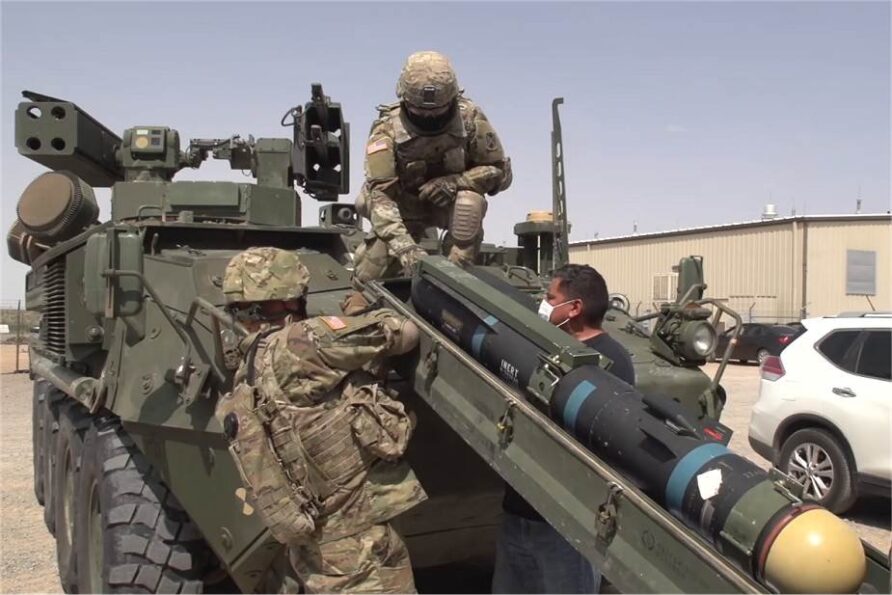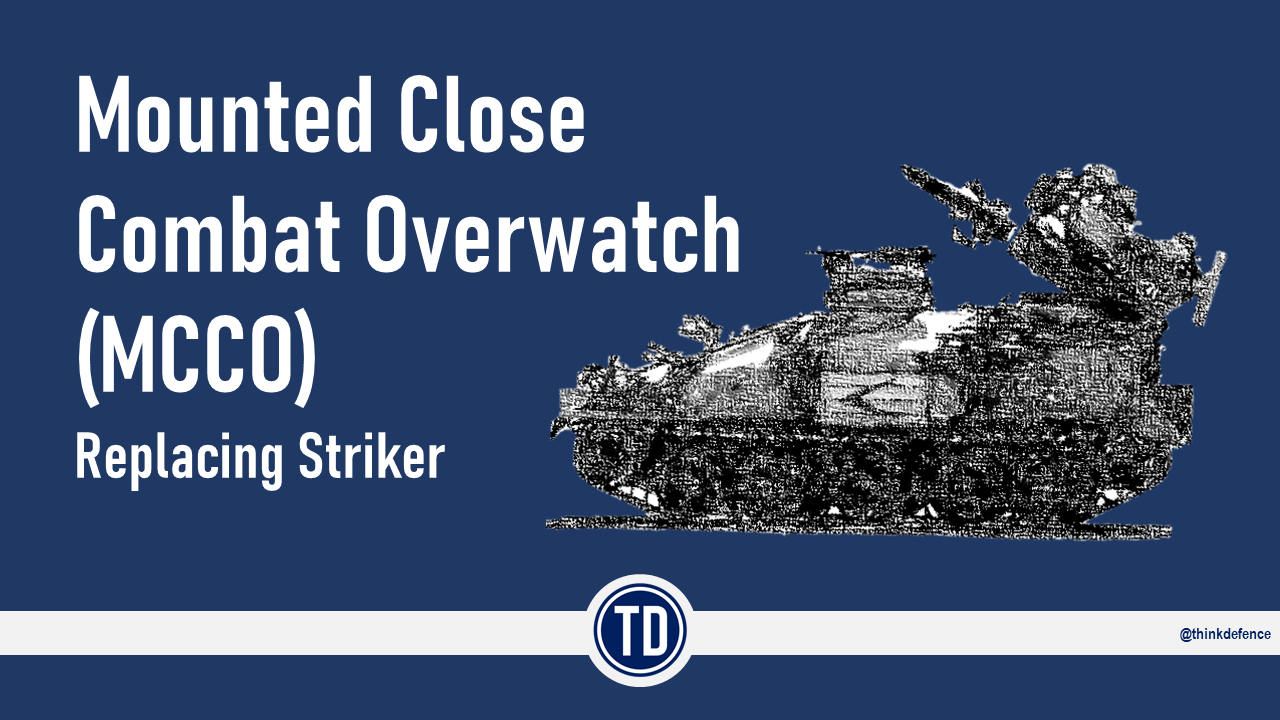You're talking about training here and I have no problems with that. We're both looking at the same thing...getting people trained as quickly as possible to a useful standard level of military competency.
The problem is the Operational duties...which as you admit are "something else". This is where I see the problem with a 70/30 (or our current 70/0) Reg Force structure. Once the student has used his/her free summers to become trained in their particular trade and are now presumably gainfully employed in the workforce, where do we get the extra 30% of the troops from for both our ongoing deployment commitments and any new commitments the government makes? Either you're having to fill those positions with Reservists (resulting in the employer pushback I was suggesting) or by pulling Reg Force personnel from other already under-strength units (presumably leaving those positions now unfilled).
The same as you do now. All our people, including RegF are volunteers who we let go based on certain release policies. Quite frankly we can and should tighten up on those and make more use of obligatory terms of service. But even if we don't, we currently work on the basis of an attrition rate and replacement rate. The only difference here is the pool of RegF and ResF is organized differently so as to improve the training of the ResF.
When is the last time we deployed a whole fully constituted battalion made up of its own three rifle companies. Even in Afghanistan our battalions were constructs of several units from within the brigade. No change here. Take a 30/70 battalion. It has its own headquarters and a rifle company or RegF, can take volunteer reservists from its own two companies (or another battalions, and , if still short can be given another RegF company from another battalion.
What most people seem to forget is that since around 2000 and managed readiness, we consider the sub-unit the building block component of a composite battle group. What 30/70, 70/30 battalions do, besides enhancing training for reservists, is to allow for the creation of several more RegF battalion headquarters which eases the roto pressure on battalions for recurring deployments and, increase the pool of better trained reservist volunteers to send instead of the same RegF folks over and over again.
And what about the 30/70 units? Do you simply pull those units out of the deployment rotations to avoid having to fill 70% of the positions each time? What extra burden does that put on the Reg Force members in the 70/30 units? We can't pretend that our units are all just sitting around waiting for a major conflict to get mobilized. There are regular ongoing as well as special deployments that happen on a regular basis (even excluding domestic ops).
Absolutely not. In fact the 30/70 battalions are the core of deploying rotos as they will have the time to absorb and train more reservists for deployments that are further on the horizon. Consider Latvia. Our force there consists primarily of a battalion headquarters and one rifle company and some add-ons. These rotos in particular can be seen as far as a year or more out leaving lots of time to train up for it. The 100/0 battalions are for quick reaction deployments with the 70/30 as a bit more robust and slightly slower reaction.
The system works on tiered readiness, with the least likely to deploy, least ready units having the greatest ResF to RegF ratio.
Agreed. This is why I'm suggesting that Reservists focus more on their basic trades skills and less on the "career" type training that pretends they are the same as Reg Force career soldiers just doing the job part time.
I agree with that too. That's why I emphasize intense and lengthy DP1 training for ResF members and that all key leadership positions such as company commander and CSM be RegF. Even within a battalion HQ you would/could have all the key staff appointments together with ResF deputies such as assistant IntO. Basically I see the average reservist's "career" top out as platoon commander (maybe coy 2i/c) and Platoon warrant officer and equivalents for other corps.
Firstly, I'd love to hear from those currently serving in the Reserves how many of their members fall into that summer student category. With many students living away from home for school I wonder how many are actually active with either their school location or home location Reserve unit during the academic year and staying active with the unit when they return home for the summer?
That would be an interesting statistic but I think one can work with most models. Remember that I look to target students at the time in their lives when living at home doing their last year of high school and wherever they are living whenever at university. Essentially, those summers aren't so much with their "unit" but at a DP1 training establishment near them whether a unit or a training depot. During this DP1/2 phase I would expect their winter weekend per month would/could also be at either a depot, unit or, in some circumstances, by distance learning. The key here is a well regulated training program.
Agreed that this is the ideal time and schedule for quick training of young recruits but I wonder what the current actual active pool of these personnel actually is. For them a program more like the US ROTC might work better with a pool of students/recruits from across the country attending the same school receiving some training (and ideally academic credit for elective courses related to their training) locally during the school year and collective training at centralized training centers during the summer.
I'm not averse to other ideas.
Agreed that Phase 1 is augmentation and agree that ideally maintenance (and support) personnel need to be increased. I guess it's more a question of when that augmentation is required. With a fixed 70/30 structure that augmentation is required basically daily right from day one. Reg Force units are not at manning levels which enable them to deploy as a complete unit. That means that your Reserve system is daily required to have a pool of personnel that are trained up to the level required for deployment and available (and supported by legislation and their employers) to be deployed for significant periods of time throughout the year.
Not really. Under the Phase 1 construct a 30/70 battalion, for example, only has around 30% of a full battalion's equipment and therefore should be adequately serviced by it and its brigade's 30% maintenance staff. That said, however, I realize that maintenance is an issue and that's one of the reasons I propose something like the one year apprenticeship program which puts a pool of additional maintainers into the system. My numbers are guestimates based on existing establishments. A proper detailed analysis would probably adjust those numbers slightly (for example a battalion HQ has a higher than 30/70 ratio of both RegF and equipment that would need to be considered.
If however the Reg Force units are at sufficient strength to fulfill their peacetime deployment requirements without ongoing daily Reserve augmentation then the Reserves only need to focus on their ongoing training and if required for mobilization can be brought up to a deployable level of readiness for augmentation of the Reg Force.
I think the issue here is the phrase "peacetime deployment requirements". Each battalion has normal ongoing "peacetime training requirements" that are fulfilled within the battalion (and some at schools outside the battalion as now). "Deployment requirements" are not a business-as-usual situation. Like now, if a 30/70 battalion is warned for a deployment roto a year hence, things would change to firstly bring the unit up to its deployment configuration and then secondly train the task force for its deployment role.
That certainly doesn't mean that Reservist that are willing and able to deploy during peacetime to augment the Reg Force in deployments wouldn't be encouraged to do so. Any time you can take a Reservist and give them the opportunity to increase their skills and knowledge through deployment and bring those skills and knowledge back to their home unit (and at the same time take some pressure off the Reg Force members) should be strongly encouraged. I just see serious problems with making this the regular situation for 30% of every deployment.
Agree as to the first part. Note my prior comments stated above. Organizing a task force based on a 30/70 battalion would draw the whatever the requirement of people is would be based firstly on the 30% RegF core of the battalion, secondly on ResF volunteers within the battalion, thirdly on ResF volunteers from other battalions and finally where there are insufficient reservists or no reservists with the requisite skills for a given position on other RegF individuals from a) within the brigade and b) from outside the brigade.
I think where we also differ is our concept of Phase 2. You see it as using the Reserves for Force Expansion, while I see it more as Force Sustainment. As Ukraine has shown us any major conflict will result in significant personnel and equipment losses. I think you'd agree that there are real limits on the amount of equipment and vehicles that we can expect to be provided to the Army. You would choose to use those vehicles and equipment to expand the size of the Army when required. I would choose to use them to maintain the size of the Army in a conflict in the face of losses. I guess I'd prefer to deploy three Brigades and keep them combat effective through the conflict rather than have six Brigades and have to rotate them and reorganize them as they each take losses and become degraded.
We don't see it differently at all. I agree entirely that force sustainment is a very real need and that you need both the people and the equipment to do so. It's why I think our current construct is deficient because right now we can't deploy three brigades and keep them combat effective even if our reservist pool was up to the job. I think keeping a veteran unit in the field with casualty replacements is preferable to rotating a veteran brigade out of the line for an unblooded one. That said, your first-in brigade may be so degraded that you have no choice but to take it out of the line for reconstitution and send in a fresh brigade to replace it. The important thing is that you have the option because the enemy may not let you use your preferred system. Your contingency plans and your force structure should be such as to give those options.
The above I'm mainly applying to the Infantry, Armoured units and tube Artillery. I believe that there are opportunities with lower manpower requirements and simulated training aids for some specialized trades like Rocket Artillery, etc. to be able to train up to a deployable level of skill on a part-time basis and could be used for force expansion rather than just augmentation.
Absolutely. Although I want to point out that even those organizations need a skilled core of full-time subject matter experts to develop TTPs and conduct the training. Creating a small group of specialists in any field always creates career progression issues for full-timers that must be carefully worked out. IMHO an example like rocket artillery can be a course-based offshoot of the general artillery trade. Other specialties may be much harder to cater for.
The problem is that it's not just Light forces that we're deploying on a regular basis. Latvia is our heavy "esotoric" force. Likely any other major deterrent operation will be with heavy, not light forces. We typically use heavy forces for our peacekeeping deployments because we are casualty adverse. Your logic only really works if it's constantly our Light Battalions that are going out the door, but more often than not it's our LAVs.
I disagree here. I keep reassessing the numbers and how I allocate them but the starting point is that the Army currently has six LAV battalion HQs and 18 LAV companies to use on rotos (without bringing in the light battalions).
I reduce the available LAV companies by six for one reason and one reason alone - to form two flyover LAV battalions prepositioned in Europe out of existing equipment. These get used for collective training for all LAV based companies both RegF and ResF.
That leaves 10 RegF LAV companies in Canada (6 in the six 30/70 bns and 4 in the two 70/30 battalions).
So essentially there are now 8 RegF LAV Bn HQs together with 10 trained RegF LAV companies and somewhere in the neighbourhood of 16 ResF companies with training on LAVs. (Essentially that's two additional battalion HQs and 8 more companies (albeit most of those are reservists) That strikes me as more than sufficient to meet a one bn HQ and one LAV company every six months roto structure.
Remember too that those six companies of prepositioned LAV in Europe came with some 600 RegF personnel that I plan on using to bolster the logistics corps. If we really need to keep them as infantrymen (which I strongly disagree with) then you could and form six more 30/70 or 3 more 70/30 LAV battalions out of them.
However, based on the fact that we can adequately keep Latvia rotos going out of the current six RegF LAV battalions (and the odd light battalion slipped in) I think we can easily do the job with the six 30/70 battalions but much more economically.
Agreed. However with a smaller full-time force than during the Cold War the amount that the Reg Force is called on for regular deployments has increased so there is little of the Reg Force that is sitting around waiting for "extreme circumstance" usage.
Neither is my construct. The 30/70 and 70/30 battalions do rotos like before and, in fact, their ability to do rotos is greatly increased by way of affiliated and better trained ResF components. In the way that we do deployments these days - i.e. in less than full battalion units - the ability to create more rotos with better integrated reservists enhances the entire forces "peacetime" capabilities. It provides a moderate "wartime" capability through better trained reservists, but in effect, in Phase 1 we remain restricted in what the army can do by way of its equipment holdings.
No issues with the above at all. We definitely need more maintainers and tech specialists, both full time and part time.





